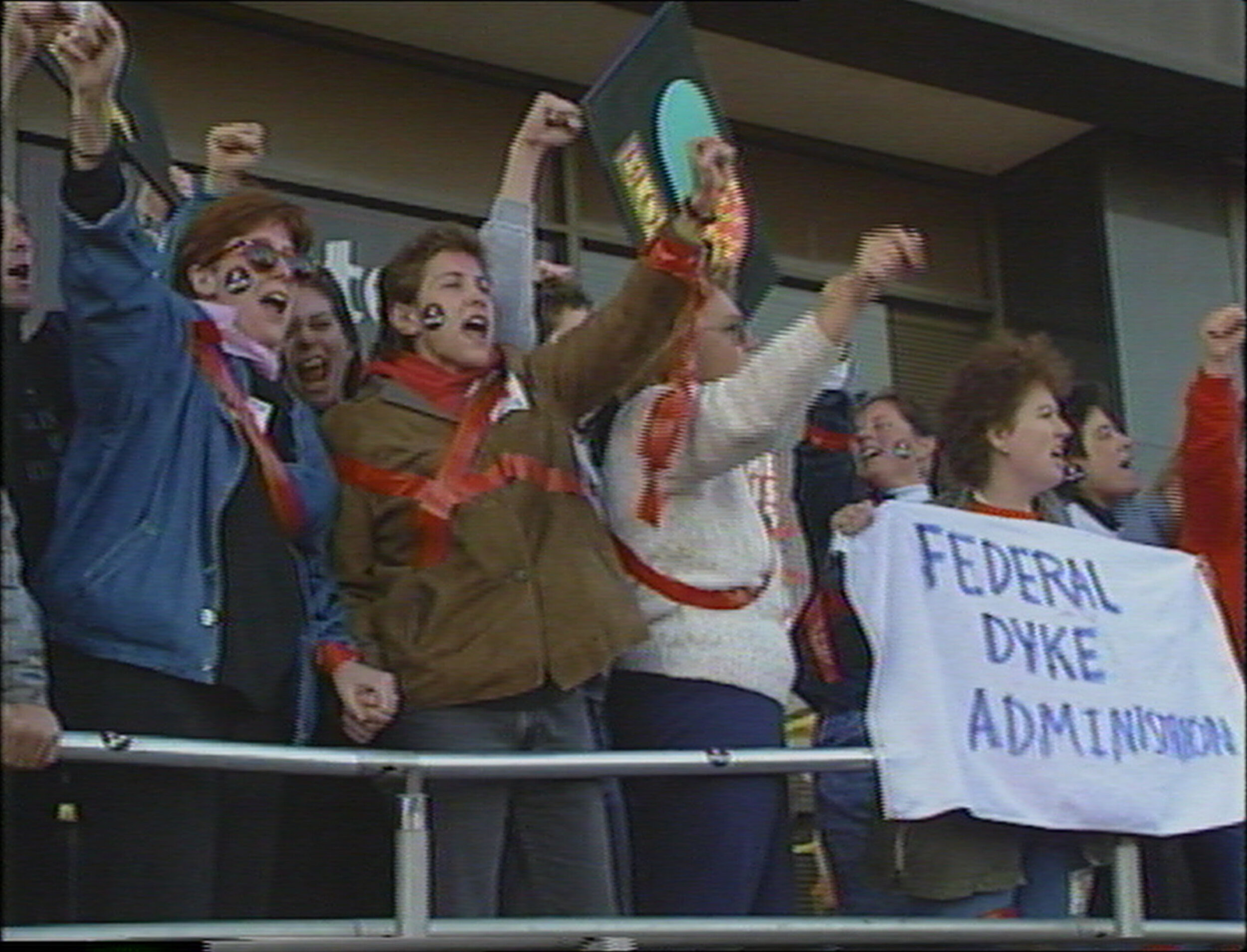
ACTIONS
AIDS Activist video remains one of the most significant cultural developments of the AIDS crisis. The tapes grew out of a large-scale, diverse, unorganized yet concerted effort by activists and videomakers to respond to the epidemic. They resulted from the widespread availability of high-quality, relatively inexpensive consumer video and a desperate need to convey life-saving information. Many of these tapes, although made solely as timely responses to the crisis, retain an extraordinary vitality. The videomakers clearly positioned themselves in opposition to an unresponsive and often antagonistic government and mainstream media. They eschewed the authoritative voice-over, the removed, dispassionate expert and scapegoating of queer people and People with AIDS, while embracing a vibrant sexuality and righteous anger.
AIDS activist video is a direct descendant of a rich and varied tradition of alternative cinema. Its antecedents include the work of Dziga Vertov, the New American Cinema, cinéma verité, the portapak tapes made by such groups as TVTV and Videofreex, feminist documentaries of the 1960s and 1970s and the political filmmaking collective Newsreel. Furthermore, the activists continued the practice of using whatever tools were available to convey their message. In general, activists used Hi-8 camcorders and edited their tapes for little or no money at public access media arts centers, AIDS organizations, schools and, late at night, at commercial facilities.
Now that we all walk around with 4K cameras in our pockets, anyone can document grassroots political action and instantaneously upload it for all the world to see. That was made possible not only by the advances in technology, but by the theoretical and practical work of previous generations of moving image makers. AIDS activism was the first movement that could substantially document itself and AIDS activist videomakers pioneered the documentation of a political movement by actual participants in the movement. They documented the demonstrations, but also influenced the presentation of those demonstration that were increasingly designed to attract the attention of the media. They pioneered the use of documenting police behavior and arrests as a safety measure that served to restrain the actions of the police.
The tapes gathered here are mostly unedited footage. They are intended to provide further insight into ACT UP’s actions and to give a visual, aural, visceral sense of the subjects discussed in the interviews. Because they are unedited they give a less mediated view of ACT UP – how people in ACT UP behaved in demonstrations and what ACT UP meetings were like. They were made by the collectives such as Testing the Limits, whose members included Gregg Bordowitz, Jean Carlomusto, Sandra Elgear, Robyn Hutt, Hilery Kipnis and David Meieran and DIVA TV (Damned Interfering Video Activist Television), which had a core group of 10-12 members and included as many as 40 people and WAVE (Women’s AIDS Video Experience). The tapes were also made by the following individuals: Tony Arena, Catherine Gund, Jim Hubbard, Alexandra Juhasz, Zoe Leonard, Debra Levine, Ellen Spiro, James Wentzy, and Phil Zwickler.
For additional perspectives on AIDS Activist Video, feel free to read these selected writings:
“AIDS Activist Video and the Evolution of the Archive” by Jim Hubbard
Fever in the Archive: AIDS Activist Videotapes from the Royal S. Marks Collection
“A Report on the Archiving of Film and Video Work by Makers with AIDS”
AIDS TV: Identity, Community and Alternative Video by Alexandra Juhasz






